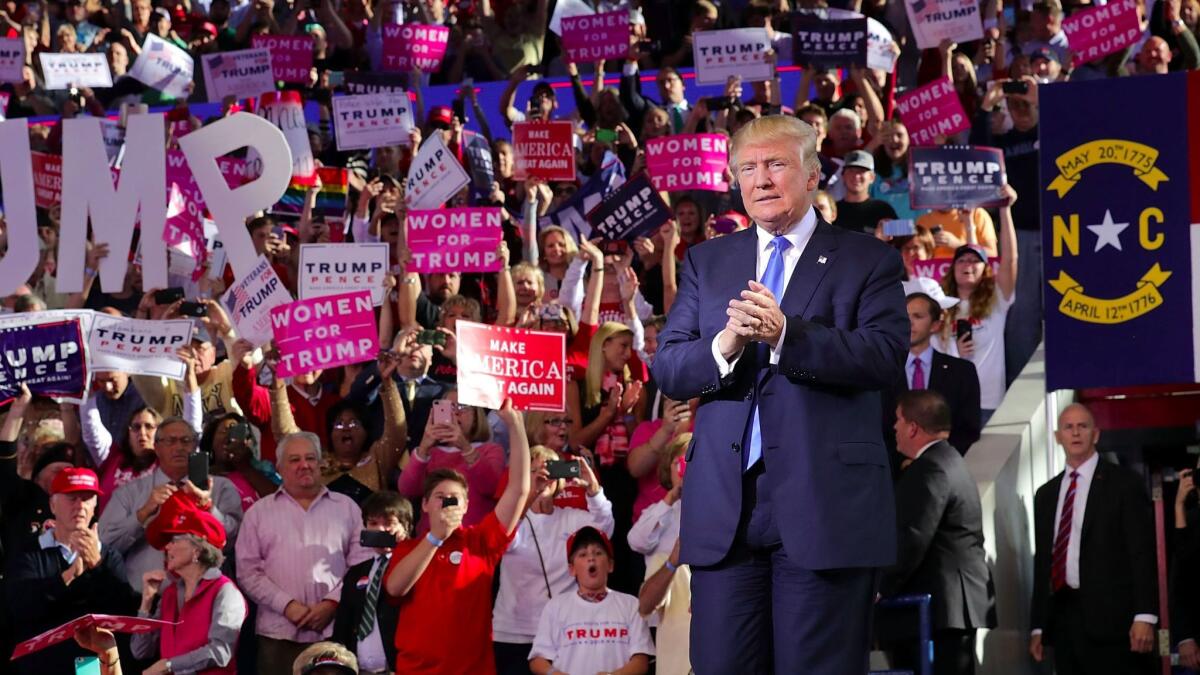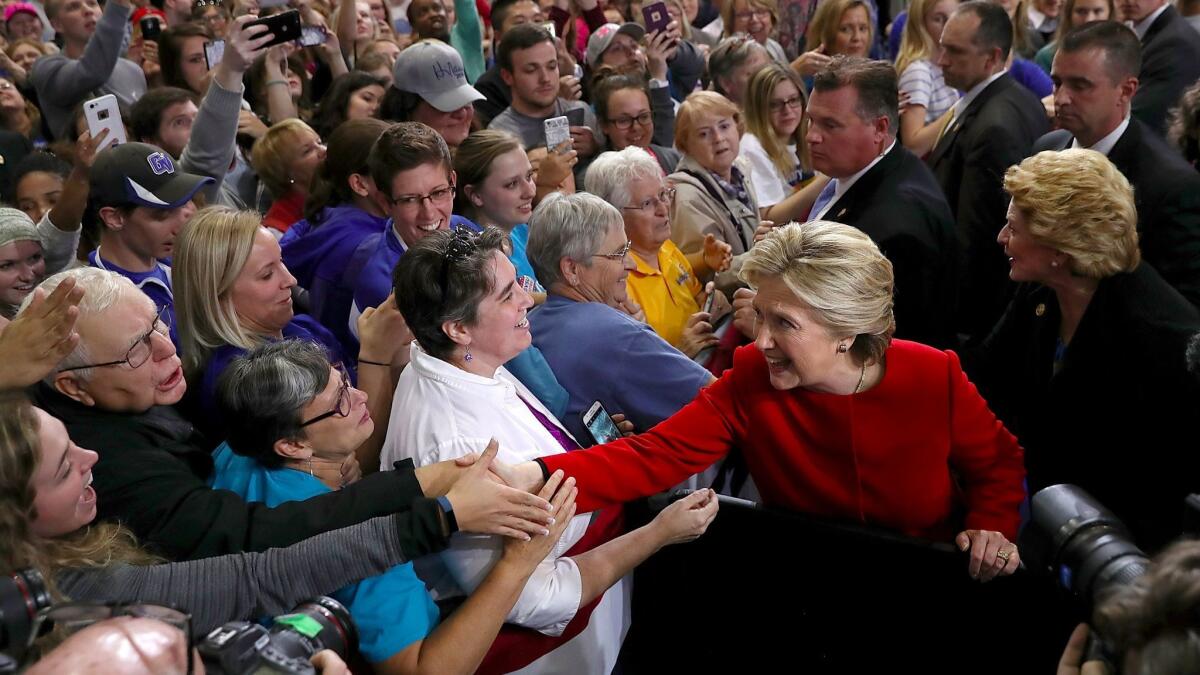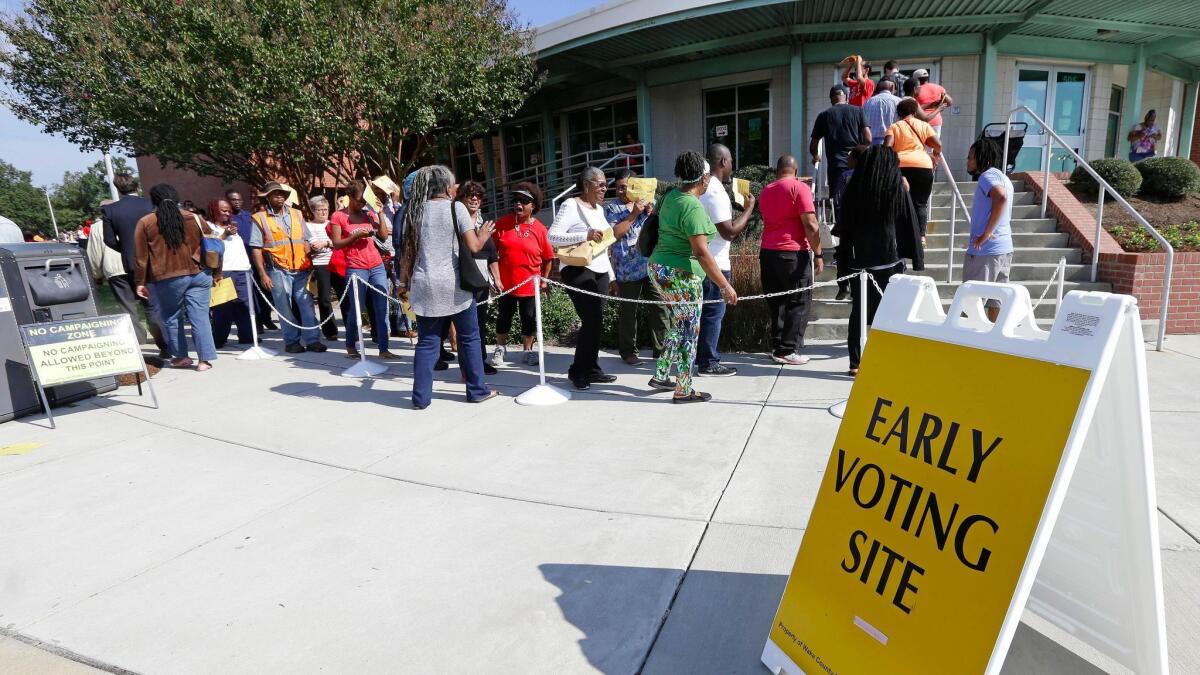On eve of election, questions build about fairness at the polls

In the final days before the presidential election, questions have been building about fairness at the polls.
Republicans have continued to warn of voting fraud by Democrats. Democrats have contended that minority voters are being intimidated by Republicans. Civil rights groups and supporters of the major candidates have launched poll-watching operations, while the federal government has sent its own voting observers and monitors across the nation.
Here’s a recap of election issues, voting glitches, court rulings and related news as the country prepares to choose its next president:
In the first presidential election since the Supreme Court struck down a key part of the Voting Rights Act, many counties previously monitored by the Justice Department have reduced the number of polling places.
Passed in 1965, the Voting Rights Act gave the federal government the right to oversee changes to voting regulations across a wide swath of Southern states and several districts elsewhere in the country that had historically discriminated against minorities.
But in 2013, the Supreme Court ruled that monitoring to be unconstitutional.
Several states responded by enacting new voting laws, including requirements that voters must show ID at the polls.
Courts have scrapped some of those laws, most notably a regulation in North Carolina that the Supreme Court this year said targeted African Americans with “almost surgical precision.”
In some places that fell under the Voting Rights Act, state governments have eliminated polling places, forcing voters to travel farther to cast their ballots. Heavily black, rural precincts in Alabama are a prominent example but far from the only one. A new study by the Leadership Conference Education Fund, a civil rights group, looked at about half the counties that had been covered by the act and found that at least 868 polling places — or 16% of the total — had been closed.
The report said there are “justifiable reasons to reduce polling places and consolidations can be executed equitably,” but added that the weakening of the act means “there is no process to ensure that reductions are disclosed to the public, are conducted with the input of impacted communities, and do not discriminate against voters of color.”

The Justice Department will dispatch poll watchers to more states than it did in 2012, but there will be fewer total monitors and they will have less power. At the same time, international groups that have come to the U.S. to monitor elections have increased their staffing.
The Justice Department typically sends hundreds of poll watchers to local precincts to make sure the voting process is running legally. Among the issues they look for are racial discrimination and voter intimidation.
Observers have unfettered access inside polling areas, while monitors need permission from local officials to enter polling places.
The department announced Monday that it was sending 500 people — 35% fewer than in the last election — to 28 states — up from 23 in 2012. Officials have said they have less authority to dispatch observers because of the weakened Voting Rights Act. This year, observers will be limited to jurisdictions where court orders are in place over voting, including several in Alabama, California, Louisiana and New York.
“In most cases, voters on the ground will see very little practical difference between monitors and observers,” the head of the department’s Civil Rights Division, Vanita Gupta, said in a statement.
International groups have increased their presence. The Organization for Security and Cooperation in Europe initially had plans to send 400 monitors across the U.S., a nearly tenfold increase from 2012 that it said was a response to the flurry of new state voting rules. The group later said it would scale down its operation because laws in several states ban international observers.
The Organization of American States has also sent 41 election monitors for the first time after an invitation from the State Department that officials described as a gesture to increase respect for American observers in foreign elections.
The National Assn. for the Advancement of Colored People is mounting a “voter protection initiative,” part of a large mobilization effort called #StayWokeAndVote.
White nationalists have announced their own voter monitoring.

Legal fights over voting issues have continued in battleground states.
In several states, including Pennsylvania, Nevada, North Carolina and Arizona, Democrats have filed lawsuits to stop what they say is Trump’s support of voter intimidation.
The lawsuits stem from Trump’s statements alleging voter fraud and encouraging his supporters to prevent it on election day by going to “certain areas” — widely perceived by Democrats as a call for monitoring minority neighborhoods that lean Democratic.
In North Carolina, Democrats asked a federal judge to block a “coordinated campaign of vigilante voter intimidation” that includes the Trump campaign, the state Republican Party and Trump associate Roger Stone, whose group Stop the Steal has organized poll monitoring.
The judge said she didn’t find enough evidence that Trump and Stone were trying to intimidate voters.
In Ohio last week, a federal judge issued a temporary restraining order that said contempt of court charges would await anyone engaging in voter intimidation near or in polling sites. On Sunday, an appeals court blocked that order, siding with lawyers from the Trump campaign who argued that it violated the 1st Amendment. On Monday, the U.S. Supreme Court refused to reinstate the order.
Voting glitches are turning up. So are scams.
Although widespread polling problems have not been an issue, small cases of potential fraud and glitches have been reported.
While voting fraud is rare, officials have announced ongoing investigations in several states. In Indiana, state police are looking into the Indiana Voter Registration Project, a Democrat-affiliated group that submitted 45,000 voter registrations this year, mostly from racial minorities. Police said they have found evidence of fraud but have not provided details.
Both major parties have used sophisticated software to boost turnout among their likely supporters. In Indiana, at least one those efforts went wrong. The Indiana Democratic Party said a technical glitch led to incorrect polling places being listed on get-out-the-vote text messages that were sent to about 2,000 Democratic voters.
Some problems cross state lines. A fake advertisement spreading on social media encouraged voters to “avoid the line” and vote by texting. In response, Twitter released an official video along with its own tweet: “Remember: You cannot vote via text or tweet. Direct message @Gov to find your polling place and ballot info.”
ALSO
Clinton and Trump churn across swing states in final blitz of campaigning
Our final map has Clinton winning with 352 electoral votes. Compare your picks with ours
A complete list of the L.A. Times’ 2016 endorsements
More to Read
Sign up for Essential California
The most important California stories and recommendations in your inbox every morning.
You may occasionally receive promotional content from the Los Angeles Times.











